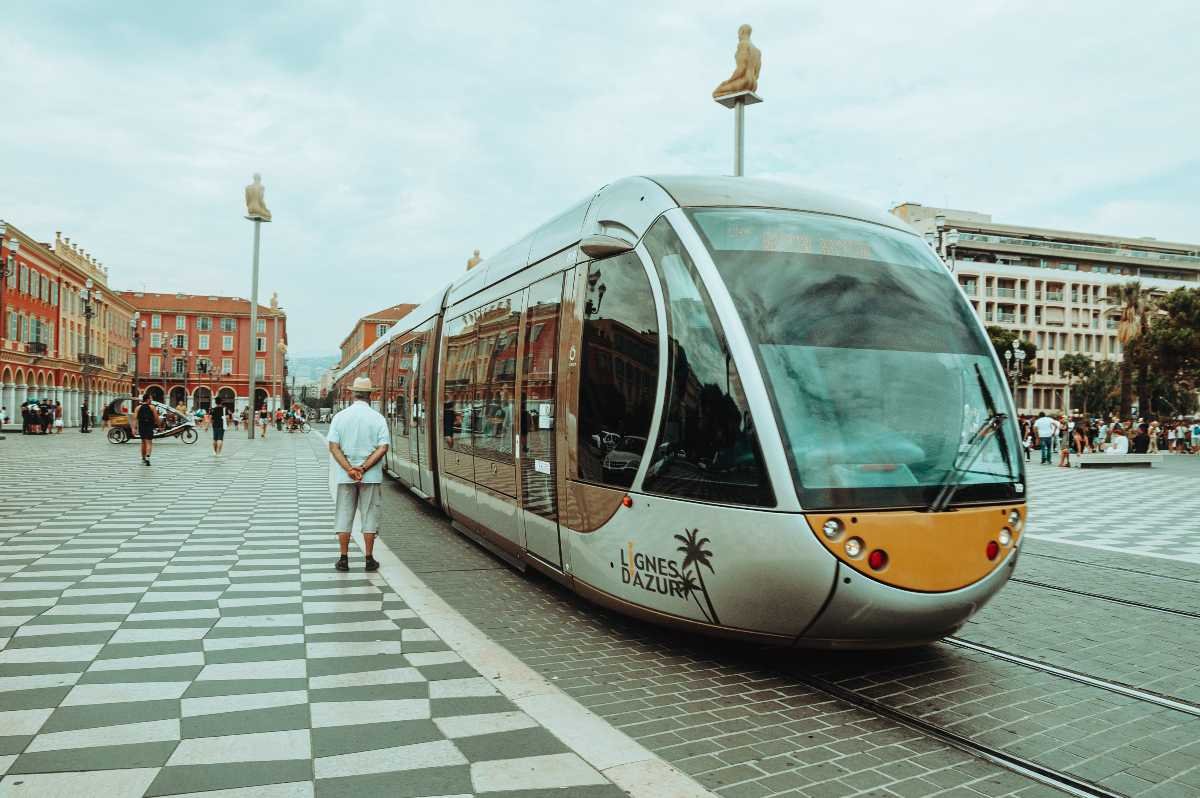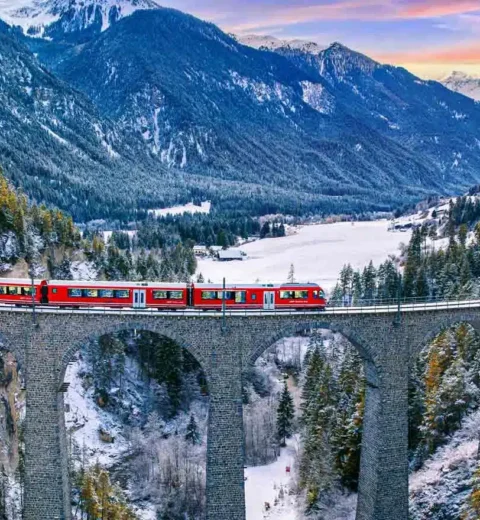France, with its picturesque landscapes, historic cities, and charming villages, is a dream destination for tourists.
Whether you’re exploring the romantic streets of Paris, the vineyards of Bordeaux, or the sun-soaked Riviera, getting around efficiently is key to a memorable trip. Fortunately, France boasts a robust and diverse transportation network that caters to every traveler’s needs.
In this guide, we’ll explore the top transportation options in France to help tourists navigate the country with ease.
1. Trains: The Backbone of French Travel
France’s train system, operated primarily by SNCF (Société Nationale des Chemins de fer Français), is one of the most efficient and reliable in the world. The high-speed TGV (Train à Grande Vitesse) connects major cities like Paris, Lyon, Marseille, and Bordeaux at speeds up to 320 km/h (200 mph), making it a fast and comfortable option.
Why Choose Trains?
- Speed and Efficiency: A TGV from Paris to Marseille takes just over 3 hours, compared to a 7-hour drive.
- Comfort: Spacious seats, onboard Wi-Fi, and dining cars ensure a pleasant journey.
- Eco-Friendly: Trains have a lower carbon footprint than cars or planes.
- Scenic Routes: Regional trains, like those through Provence or the Loire Valley, offer stunning views of the countryside.
Tips for Tourists:
- Book Early: TGV tickets are cheaper when booked in advance (up to 3 months) via the SNCF website or apps like Trainline.
- Consider Rail Passes: The Eurail France Pass or Interrail Pass (for Europeans) offers unlimited travel for a set period, ideal for multi-city trips.
- Navigating Stations: Major stations like Paris Gare du Nord or Lyon Part-Dieu are busy but well-signposted. Arrive early to find your platform.
2. Metro and RER: Mastering Urban Mobility
For city exploration, especially in Paris, the Metro and RER (Réseau Express Régional) systems are indispensable. Paris’s Metro has 16 lines and over 300 stations, making it easy to zip between landmarks like the Eiffel Tower, Louvre, and Montmartre.
Why Choose Metro/RER?
- Convenience: Frequent trains (every 2-5 minutes) and extensive coverage.
- Affordability: Single tickets cost around €2.10, or opt for a Navigo Pass or Paris Visite Pass for unlimited travel over 1-5 days.
- Connectivity: The RER connects central Paris to the suburbs and attractions like Disneyland Paris or Versailles (RER C).
Tips for Tourists:
- Buy Multi-Ticket Packs: A carnet of 10 Metro tickets saves money compared to single purchases.
- Avoid Rush Hours: Peak times (7-9 AM, 5-7 PM) can be crowded.
- Use Apps: Download the RATP app or Citymapper for real-time schedules and route planning.
3. Buses: Budget-Friendly and Far-Reaching
Long-distance buses, operated by companies like FlixBus and BlaBlaCar Bus, are a cost-effective alternative to trains, connecting cities and smaller towns across France and Europe.
Why Choose Buses?
- Affordability: Tickets can be as low as €10 for intercity routes if booked early.
- Accessibility: Buses serve destinations not always covered by trains, like rural areas in Normandy or the Alps.
- Modern Amenities: Wi-Fi, power outlets, and reclining seats make long journeys comfortable.
Tips for Tourists:
- Book Online: Secure the best deals through company websites or apps.
- Check Departure Points: Bus stations (e.g., Paris Bercy Seine) may be separate from train stations.
- Plan for Time: Buses take longer than trains, so factor this into your itinerary.
4. Car Rentals: Freedom to Explore
Renting a car is ideal for exploring rural areas like the Dordogne, Provence, or the French Alps, where public transport is less frequent. Companies like Hertz, Enterprise, and Europcar operate across France.
Why Choose Car Rentals?
- Flexibility: Create your own itinerary and stop at hidden gems like châteaux or vineyards.
- Scenic Drives: Routes like the Route des Vins in Alsace or the Corniche roads along the Côte d’Azur are breathtaking.
- Accessibility: Cars are perfect for families or groups with luggage.
Tips for Tourists:
- Know the Rules: France drives on the right, and tolls (péages) are common on highways. A credit card is often required for tolls.
- Parking Challenges: Cities like Paris have limited parking, so consider public transport in urban areas.
- International Driving Permit: Non-EU visitors may need one, so check the requirements before renting.
5. Bicycles: Eco-Friendly and Fun
France is a cyclist’s paradise, with bike-friendly cities and scenic routes like the Loire à Vélo trail. Many cities, including Paris, Lyon, and Bordeaux, offer bike-sharing programs like Vélib’ (Paris) or Vélo’v (Lyon).
Why Choose Bicycles?
- Affordability: Daily bike rentals or passes cost €5-10.
- Health and Environment: A sustainable way to stay active while sightseeing.
- Accessibility: Dedicated bike lanes and flat terrains in cities make cycling easy.
Tips for Tourists:
- Use Bike Apps: Apps like Vélib’ or Geovelo show docking stations and bike routes.
- Safety First: Wear helmets (not mandatory but recommended) and follow traffic rules.
- Explore Beyond Cities: Rent bikes for multi-day trips along canal paths or wine routes.
6. Domestic Flights: For Long Distances
For travelers short on time, domestic flights connect major cities like Paris, Nice, Toulouse, and Marseille. Airlines like Air France, easyJet, and Ryanair offer competitive fares.
Why Choose Flights?
- Time-Saving: A flight from Paris to Nice takes about 1.5 hours versus 6 hours by TGV.
- Affordability: Budget airlines offer fares as low as €30 if booked early.
Tips for Tourists:
- Compare Prices: Use platforms like Skyscanner to find deals.
- Consider Alternatives: Trains are often more convenient for shorter routes (e.g., Paris to Lyon).
- Airport Access: Check transport options to/from airports, as some (e.g., Paris Beauvais) are far from city centers.
7. Taxis and Rideshares: Convenient Short Trips
Taxis and rideshare apps like Uber and Bolt are widely available in cities for quick, door-to-door transport.
Why Choose Taxis/Rideshares?
- Convenience: Ideal for late-night travel or when public transport isn’t an option.
- Comfort: Great for small groups or those with heavy luggage.
Tips for Tourists:
- Verify Fares: Taxis have meters, but confirm approximate costs for rideshares via apps.
- Book in Advance: For airport transfers, pre-book to avoid long waits.
- Language Barrier: Have your destination address written down, as not all drivers speak English.
8. Ferries: Coastal and Island Adventures
For coastal destinations or islands like Corsica, ferries are a scenic option. Companies like Corsica Ferries and Brittany Ferries connect mainland France to Corsica, Sardinia, and the UK.
Why Choose Ferries?
- Unique Experience: Enjoy sea views and onboard amenities like restaurants.
- Vehicle Transport: Many ferries allow cars, perfect for island road trips.
Tips for Tourists:
- Book Early: Especially in summer, ferries to Corsica fill up fast.
- Check Schedules: Ferries run less frequently than trains or buses, so plan ahead.
- Port Access: Ensure you know the departure port (e.g., Nice or Toulon for Corsica).
Top Transportation Options in France
A concise guide to the best ways tourists can travel across France with ease.
| Transportation | Best For | Key Benefits | Tips for Tourists |
| Trains (TGV, Regional) | Intercity travel, scenic routes | Fast (TGV up to 320 km/h), comfortable, eco-friendly | Book TGV tickets early via SNCF or Trainline; consider Eurail/Interrail passes |
| Metro/RER | Urban exploration (e.g., Paris) | Frequent, affordable (€2.10/ticket), extensive coverage | Buy a carnet of 10 tickets; use RATP or Citymapper apps |
| Buses (FlixBus, BlaBlaCar Bus) | Budget travel, rural areas | Cheap (from €10), modern amenities, wide reach | Buy a carnet of 10 tickets; use the RATP or Citymapper apps |
| Car Rentals | Rural exploration, flexibility | Scenic drives, customizable itineraries | Get an International Driving Permit if needed; beware of city parking challenges |
| Bicycles (Vélib’, Vélo’v) | City sightseeing, eco-friendly travel | Affordable (€5-10/day), bike-friendly cities | Use bike apps like Geovelo; wear helmets for safety |
| Domestic Flights | Long distances, time-saving | Quick (e.g., Paris-Nice in 1.5 hrs), budget options | Compare fares on Skyscanner; check airport transport |
| Taxis/Rideshares (Uber, Bolt) | Short trips, convenience | Door-to-door service, great for luggage | Pre-book airport transfers; have destination address ready |
| Ferries | Coastal/island travel (e.g., Corsica) | Scenic, can transport cars | Scenic can transport cars |
Final Thoughts
France’s transportation options cater to every budget, schedule, and travel style. For speed and comfort, hop on a TGV or Metro. For budget-conscious trips, buses or bike-sharing are excellent choices. If you crave flexibility, rent a car to explore at your own pace.
Whatever you choose, plan ahead, book early, and use apps to streamline your journey. With these options, you’ll navigate France effortlessly, leaving more time to savor its culture, cuisine, and charm.
Bon voyage!
Ready to Plan Your Dream Trip to France?
If you’ve been dreaming of strolling through the romantic streets of Paris, exploring the charming countryside of Provence, or relaxing along the French Riviera, this guide will help make that dream come true!
From crafting your perfect itinerary and setting your travel budget to discovering hidden gems beyond Paris, Nice, and Lyon — we’ve got everything you need to make your French vacation seamless and unforgettable.
Click the link below to learn step-by-step how to plan your trip to France:
How to Plan a Trip to France
Whether it’s your first visit or a return to explore more of France’s timeless beauty, eurotravelo.com offers expert travel tips, insider advice, and complete itineraries to help you experience the very best of France. Visit our site and start planning your French adventure today!
FAQs
What is the best way to travel between cities in France?
The most efficient way to travel between major French cities is by high-speed train (TGV). It connects cities like Paris, Lyon, Marseille, Bordeaux, and Nice in just a few hours. For longer distances, domestic flights are also an option, but the TGV is usually faster and more eco-friendly.
Is public transportation reliable in France?
Yes, France has an excellent and reliable public transportation system. Major cities like Paris, Lyon, and Marseille have extensive metro, tram, and bus networks that are safe, affordable, and punctual. Smaller towns also have local bus services, though schedules may be limited on weekends.
Are taxis or ride-sharing apps available in France?
Absolutely. Taxis are available in most cities, and ride-sharing apps like Uber, Bolt, and BlaBlaCar operate widely across France. BlaBlaCar is especially popular for budget-friendly intercity rides.
Is renting a car a good option for tourists in France?
Renting a car is ideal if you plan to explore rural areas, small villages, or the French countryside such as Provence or Normandy. However, it’s not recommended for big cities like Paris, where traffic and parking can be challenging.
How much does public transportation cost in France?
Public transport is quite affordable. A single metro or bus ticket in Paris costs around €2.15, while day passes or weekly passes offer better value for frequent travelers. Train ticket prices vary depending on distance and booking time — booking early can help you save significantly.




